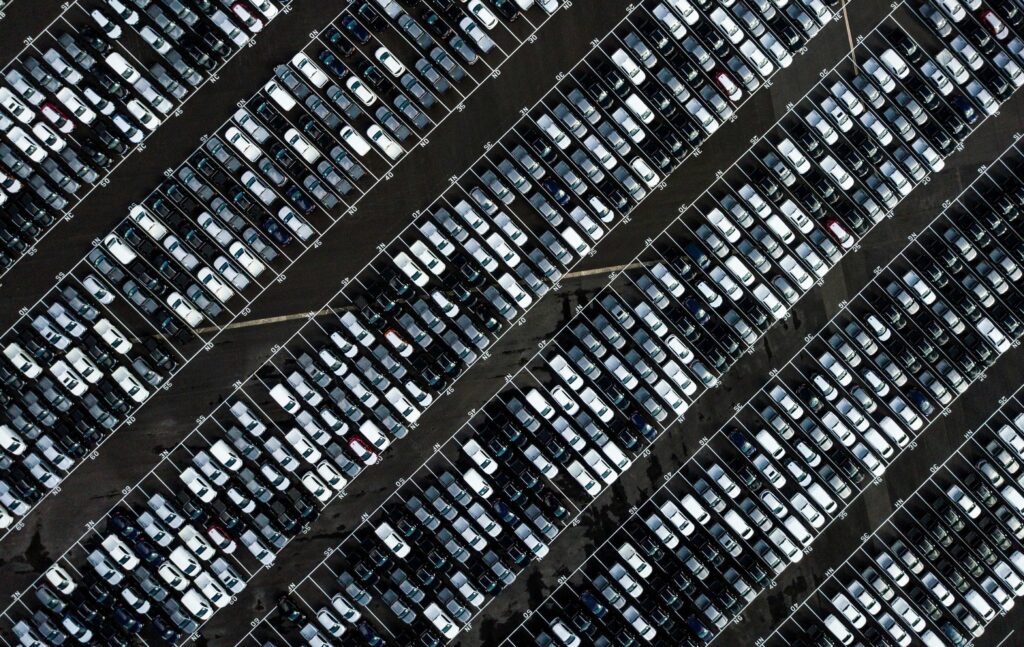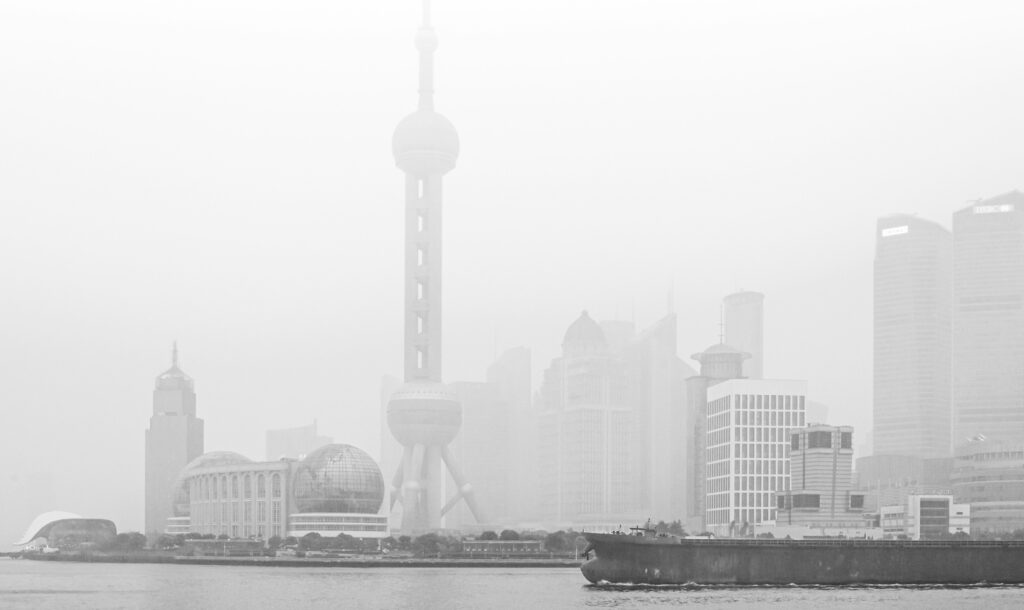
If investors were to visit the Xiaomo International Logistics Port in Shenzhen, they might have the chance to see a particularly unique giant ship moored at the port. Measuring about 200 meters in length, this ship, unlike regular container cargo ships with open cargo holds, has a sealed hull, resembling a white sardine can. This is the first ship built by the Chinese automotive brand BYD for its overseas fleet, named Explorer No.1, capable of carrying 7,000 vehicles. On January 15th, Explorer No.1 set sail from Shenzhen, carrying 5,449 new energy vehicles destined for the Netherlands and Germany.
Ports are one of the best places to observe a country’s export trends. In the past two years, major Chinese ports such as Shanghai, Ningbo, Shenzhen, and Qingdao have seen a booming development in the export of Chinese electric vehicles (EVs). In addition to EVs, other products related to new energy have also accelerated their pace of going global, among which EVs, solar cells, and lithium batteries lead the growth. These are even given the code name “new three” by the authorities, corresponding to China’s previous export pillars of “old three “: clothing, household appliances, and furniture.
In 2023, China’s overall exports were relatively weak, but exports of the “new three” steadily increased, with the export value of these three items reaching about 1.06 trillion yuan, an increase of about 30% year-on-year. Not only is the proportion of the “new three” in China’s exports increasing, but their global market share is also significantly rising. Data shows that China now accounts for over 80% of global solar cell exports, over 50% of lithium battery exports, and over 20% of EV exports.
Ordinary people may not be deeply aware of solar cells and lithium batteries, as they mostly belong to the intermediate links of industrial production. However, the rapid development of Chinese EVs is believed to be visible to most investors.
As the second-largest consumer product after housing, decisions to purchase automobiles are usually made after careful research and comparison. Chinese EVs have not only penetrated markets in Southeast Asian countries such as Thailand and the Philippines but also witnessed thriving sales in traditional automobile manufacturing countries in Europe such as Belgium, the UK, and Spain. Statistics show that in the first half of 2023, about 350,000 new energy vehicles were exported to Europe, accounting for about a quarter of the sales volume of EVs and plug-in hybrid EVs during this period. Winning recognition in the European market also demonstrates the attractiveness of Chinese EVs in terms of performance and price.
Challenges Behind the Strong Performance of the “New Three”
Investors focusing on the Chinese stock market may be aware that despite the impressive export data of the “new three” last year, the performance of new energy stocks has been disappointing. On one hand, the market’s tolerance for high-growth companies has significantly decreased due to rising interest rates and a withdrawal of liquidity. On the other hand, excessive internal competition within the new energy sector has also harmed the interests of companies within the sector.
In recent years, strong support and massive subsidies from national policies for renewable energy have led to rapid growth in the industry. However, this has also brought about disorderly expansion and excessive competition.
Since 2022, competition in the Chinese EV market has become increasingly fierce. In order to achieve ambitious sales targets, China’s EV manufacturers have had to reduce prices to capture market share. Therefore, behind the impressive sales figures, many car manufacturers have experienced declining profit margins.
Competition in the lithium battery industry is also fierce. Due to oversupply, lithium carbonate prices plummeted last year. The average price of lithium per ton in the fourth quarter of 2022 was still around 550,000 yuan. But by April 2023, lithium prices had plummeted to around 180,000 yuan.
In addition to intense domestic competition, exports of new energy also face trade restrictions from the US and Europe. In September last year, the EU initiated an investigation mainly because it believed that cheap Chinese EVs were flooding the European market, posing a threat to the local EV industry. The US also indirectly excluded Chinese EVs by passing extremely exclusionary provisions on EV subsidies in the Inflation Reduction Act (IRA). The Biden administration initially imposed a 25% tariff on Chinese solar products. On top of that, sanctions against Chinese solar companies were repeatedly launched, with punitive tariffs of up to 254% on some Chinese solar cell exports.
Irreplaceable Advantages
In response to the intense domestic competitive landscape, new energy enterprises are also exploring various avenues and strategies. In addition to expanding overseas markets and increasing export efforts, companies are also venturing abroad. For example, BYD established a factory in Hungary last year, and its factories in Thailand and Brazil are expected to start production this year. By exploring different developments, companies try to take greater initiative in fiercely competitive markets.
Given the various challenges facing the new energy industry, whether the “new three” can maintain a leading edge in the international market is also a focus of attention. We believe that the advantage of Chinese enterprises comes not only from the vast domestic market that promotes economies of scale (while also bringing fierce competition) but also from the continuous innovation and well-established supply chain. The average education level of newly added labor force in China has increased to 14 years, with a population of 240 million having received higher education. In 2018, China’s per capita GDP was $9,771, but its innovation index score has approached that of European countries with a per capita GDP of around $50,000. Southeast Asian countries are unable to compete with China in terms of innovation and technology in the short term. Although European and American countries have begun to bring back some supply chains after the pandemic, the completeness and flexibility of their supply chains are also difficult to compete with China.
Therefore, while the “new three” face challenges, a great part of those challenges come from internal competition. On the international competitive level, Chinese new energy enterprises still have irreplaceable advantages.
Many new energy enterprises are experiencing the process of “big fish eats small fish,” where small businesses gradually exit the market, and winning companies gain a larger market share. Before the visibility of industry differentiation becomes higher, we will remain a cautious stance towards companies in over-competitive industries. We emphasize a careful balance between growth potential and the risk of declining margins due to heightened competition.
Disclaimer
This document is based on management forecasts and reflects prevailing conditions and our views as of this date, all of which are accordingly subject to change. In preparing this document, we have relied upon and assumed without independent verification, the accuracy and completeness of all information available from public sources. All opinions or estimates contained in this document are entirely Zeal Asset Management Limited’s judgment as of the date of this document and are subject to change without notice.
Investments involve risks. Past performance is not indicative of future performance. You may lose part or all of your investment. You should not make an investment decision solely based on this information. Each Fund may have different underlying investments and be exposed to a number of different risk, prior to investing, please read the offering documents of the respective funds for details, including risk factors. If you have any queries, please contact your financial advisor and seek professional advice. This material is issued by Zeal Asset Management Limited and has not been reviewed by the Securities and Futures Commission in Hong Kong.
There can be no assurance that any estimates of future performance of any industry, security or security class discussed in this presentation can be achieved. The portfolio may or may not have current investments in the industry, security or security class discussed. Any reference or inference to a specific industry or company listed herein does not constitute a recommendation to buy, sell, or hold securities of such industry or company. Please be advised that any estimates of future performance of any industry, security or security class discussed are subject to change at any time and are current as of the date of this presentation only. Targets are objectives only and should not be construed as providing any assurance or guarantee as to the results that may be realized in the future from investments in any industry, asset or asset class described herein.
In respect of any discrepancy between the English and Chinese version, the English version shall prevail.



